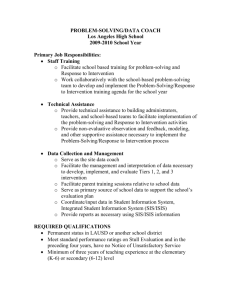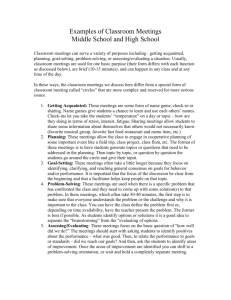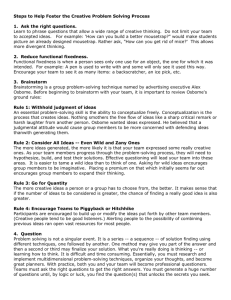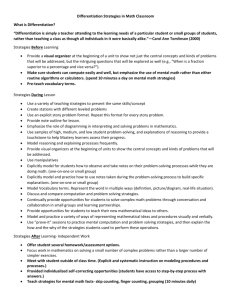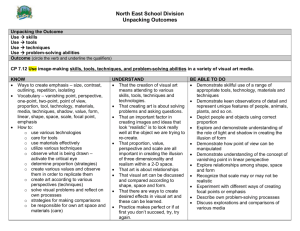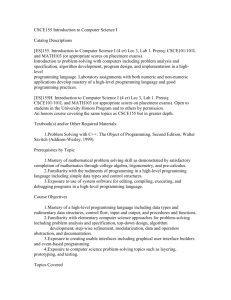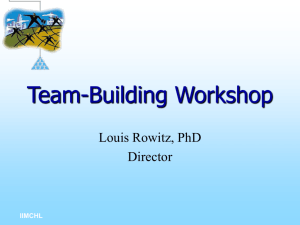10 Team Building Activities
advertisement
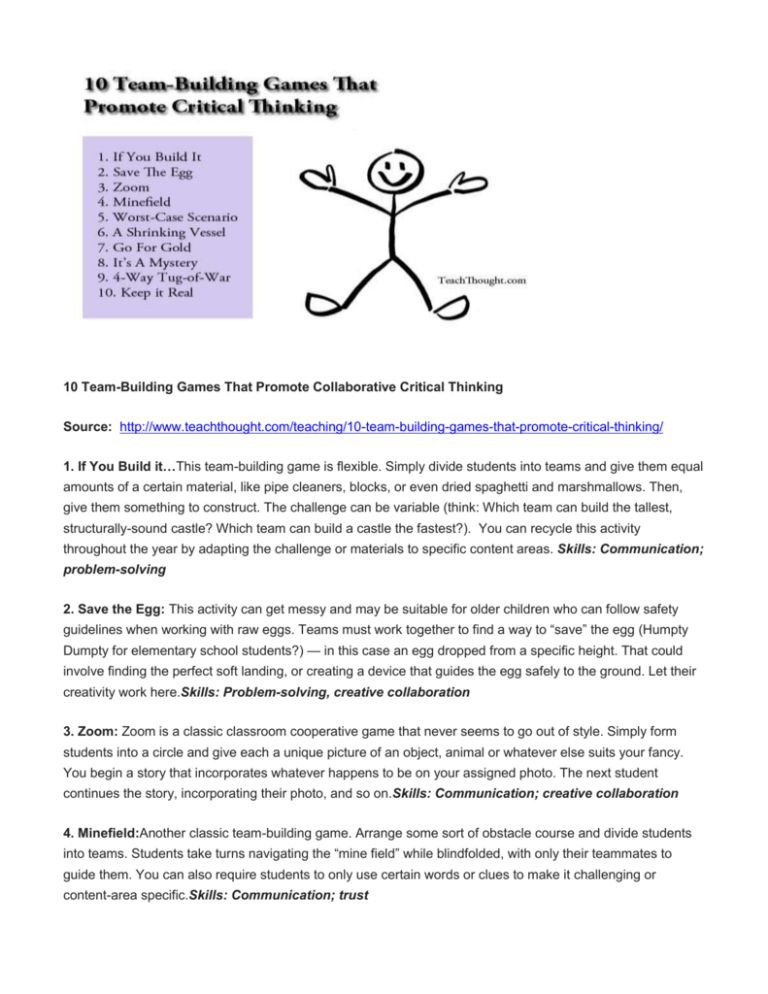
10 Team-Building Games That Promote Collaborative Critical Thinking Source: http://www.teachthought.com/teaching/10-team-building-games-that-promote-critical-thinking/ 1. If You Build it…This team-building game is flexible. Simply divide students into teams and give them equal amounts of a certain material, like pipe cleaners, blocks, or even dried spaghetti and marshmallows. Then, give them something to construct. The challenge can be variable (think: Which team can build the tallest, structurally-sound castle? Which team can build a castle the fastest?). You can recycle this activity throughout the year by adapting the challenge or materials to specific content areas. Skills: Communication; problem-solving 2. Save the Egg: This activity can get messy and may be suitable for older children who can follow safety guidelines when working with raw eggs. Teams must work together to find a way to “save” the egg (Humpty Dumpty for elementary school students?) — in this case an egg dropped from a specific height. That could involve finding the perfect soft landing, or creating a device that guides the egg safely to the ground. Let their creativity work here.Skills: Problem-solving, creative collaboration 3. Zoom: Zoom is a classic classroom cooperative game that never seems to go out of style. Simply form students into a circle and give each a unique picture of an object, animal or whatever else suits your fancy. You begin a story that incorporates whatever happens to be on your assigned photo. The next student continues the story, incorporating their photo, and so on.Skills: Communication; creative collaboration 4. Minefield:Another classic team-building game. Arrange some sort of obstacle course and divide students into teams. Students take turns navigating the “mine field” while blindfolded, with only their teammates to guide them. You can also require students to only use certain words or clues to make it challenging or content-area specific.Skills: Communication; trust 5. The Worst-Case Scenario: Fabricate a scenario in which students would need to work together and solve problems to succeed, like being stranded on a deserted island or getting lost at sea. Ask them to work together to concoct a solution that ensures everyone arrives safely. You might ask them to come up with a list of 10 must-have items that would help them most, or a creative passage to safety. Encourage them to vote — everyone must agree to the final solution.Skills: Communication, problem-solving 6. A Shrinking Vessel:This game requires a good deal of strategy in addition to team work. Its rules are deceptively simple: The entire group must find a way to occupy a space that shrinks over time, until they are packed creatively like sardines. You can form the boundary with a rope, a tarp or blanket being folded over or small traffic cones. (Skills: Problem-solving; teamwork) 7. Go for Gold:This game is similar to the “If you build it” game: Teams have a common objective, but instead of each one having the same materials, they have access to a whole cache of materials. For instance, the goal might be to create a contraption with pipes, rubber tubing and pieces of cardboard that can carry a marble from point A to point B in a certain number of steps, using only gravity.Creative collaboration; communication; problem-solving 8. It’s a Mystery: Many children (and grown-ups) enjoy a good mystery, so why not design one that must be solved cooperatively? Give each student a numbered clue. In order to solve the mystery — say, the case of the missing mascot — children must work together to solve the clues in order. The “case” might require them to move from one area of the room to the next, uncovering more clues.Skills: Problem-solving, communication 9. 4-Way Tug-of-War :That playground classic is still a hit — not to mention inexpensive and simple to execute. For a unique variation, set up a multi-directional game by tying ropes in such a way that three or four teams tug at once. Some teams might choose to work together to eliminate the other groups before going head-to-head.Skills: Team work; sportsmanship 10. Keep it Real:This open-ended concept is simple and serves as an excellent segue into problem-based learning. Challenge students to identify and cooperatively solve a real problem in their schools or communities. You may set the parameters, including a time limit, materials and physical boundaries.Skills: Problem-solving; communication




